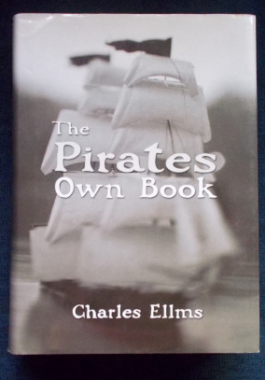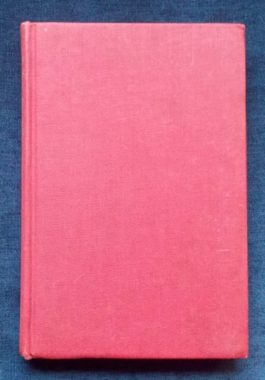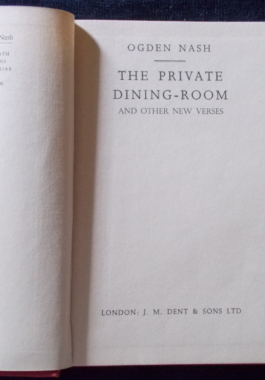-
 Originally published in 1837, here are the 'Authentic Narratives of the Most Celebrated Sea Robbers' - pirates! True stories of the diabolical desperadoes who plundered ships on the high seas and murdered their passengers and crews. The stories - based on contemporary newspaper accounts, trial proceedings and Admiralty records - describe in lurid detail the life, atrocities and bloody death of the infamous Black Beard as well as the cold-blooded exploits of Jean Lafitte, Robert Kidd, Edward Low, Thomas White, Anne Bonney, Mary Read and scores of other maritime marauders. For those interested in the true-life adventures of the ruthless men and women who sailed under the black flag so long ago. With illustrations reproduced from the original edition.
Originally published in 1837, here are the 'Authentic Narratives of the Most Celebrated Sea Robbers' - pirates! True stories of the diabolical desperadoes who plundered ships on the high seas and murdered their passengers and crews. The stories - based on contemporary newspaper accounts, trial proceedings and Admiralty records - describe in lurid detail the life, atrocities and bloody death of the infamous Black Beard as well as the cold-blooded exploits of Jean Lafitte, Robert Kidd, Edward Low, Thomas White, Anne Bonney, Mary Read and scores of other maritime marauders. For those interested in the true-life adventures of the ruthless men and women who sailed under the black flag so long ago. With illustrations reproduced from the original edition. -

 Nash observes the world around him and cannot resist making humorous, sly and very on-the-mark rhymes while often poking fun at society pretensions. There's even a few fractured fables and fairy tales in this collection. So, just for fun...
Nash observes the world around him and cannot resist making humorous, sly and very on-the-mark rhymes while often poking fun at society pretensions. There's even a few fractured fables and fairy tales in this collection. So, just for fun...I often grieve for Uncle Hannibal
Who inadvertently became a cannibal.
He asked Aunt Mary to roast him the gobbler;
She understood him to say - the cobbler.
-
 In some ways a sequel or successor to The Autocrat At The Breakfast-Table, there is plenty of philosophy, social critique and religious insights. Physician, poet, philosopher and essayist, Holmes also contributed much to medical reform in the 1800s. He was a member of the Fireside Poets and regarded as one of the best writers of his day. a collection of essays originally published in The Atlantic Monthly in 1857 and 1858 before being collected in book form. The essays take the form of a chiefly one-sided dialogue between the unnamed 'Author' and the other residents of a New England boarding house who are known only by their profession, location at the table or other defining characteristics. The topics discussed range from an essay on the unexpected benefits of old age to the finest place to site a dwelling and comments on the nature of conversation itself. The tone of the book is distinctly Yankee and takes a seriocomic approach to the subject matter. Each essay typically ends with a poem on the theme of the essay. There are also poems ostensibly written by the fictional disputants scattered throughout.
In some ways a sequel or successor to The Autocrat At The Breakfast-Table, there is plenty of philosophy, social critique and religious insights. Physician, poet, philosopher and essayist, Holmes also contributed much to medical reform in the 1800s. He was a member of the Fireside Poets and regarded as one of the best writers of his day. a collection of essays originally published in The Atlantic Monthly in 1857 and 1858 before being collected in book form. The essays take the form of a chiefly one-sided dialogue between the unnamed 'Author' and the other residents of a New England boarding house who are known only by their profession, location at the table or other defining characteristics. The topics discussed range from an essay on the unexpected benefits of old age to the finest place to site a dwelling and comments on the nature of conversation itself. The tone of the book is distinctly Yankee and takes a seriocomic approach to the subject matter. Each essay typically ends with a poem on the theme of the essay. There are also poems ostensibly written by the fictional disputants scattered throughout. -
 The son of the chief of Maia Island has taken Ati Manu, a jewelled collar which is their only valuable, to exchange for food for its starving people. Two men follow him through the jungle but he manages to hide the collar in a hollow tree before he is cornered and killed. The Brevitt family take up the search for the valuable collar despite the armed murderers who wait for them in the jungle. They are robbed of vital skin diving equipment and are attacked by sea creatures in their efforts to find Ati Manu and help the natives. Danger stalks the family as they search for the treasure, with plenty of adventures before the hunt ends. Illustrated by Stuart Tresilian.
The son of the chief of Maia Island has taken Ati Manu, a jewelled collar which is their only valuable, to exchange for food for its starving people. Two men follow him through the jungle but he manages to hide the collar in a hollow tree before he is cornered and killed. The Brevitt family take up the search for the valuable collar despite the armed murderers who wait for them in the jungle. They are robbed of vital skin diving equipment and are attacked by sea creatures in their efforts to find Ati Manu and help the natives. Danger stalks the family as they search for the treasure, with plenty of adventures before the hunt ends. Illustrated by Stuart Tresilian. -
 Sir Marmaduke Vane-Temperly, a man of the world who is weary of the world, goes forth to seek his vanished youth. He's cynical, pompous and ever the gentleman as befits his position. Of the many adventures that befall him, a mysterious murder is but one. He also meets Eve-Anne, a gentle, innocent 19 year old girl who on a quest for adventure and who knows him as 'John Hobbes', a gambler who cannot understand Eve-Anne's depth of generosity and feeling for those worse off than herself and her endless willingness to help them. Set in the Regency, when bucks and dandies thought it quite the adventure to meet the bruisers, vagabonds and footpads that abounded in an England that had a sharp divide between the rich and poor, the privileged and the commoners.
Sir Marmaduke Vane-Temperly, a man of the world who is weary of the world, goes forth to seek his vanished youth. He's cynical, pompous and ever the gentleman as befits his position. Of the many adventures that befall him, a mysterious murder is but one. He also meets Eve-Anne, a gentle, innocent 19 year old girl who on a quest for adventure and who knows him as 'John Hobbes', a gambler who cannot understand Eve-Anne's depth of generosity and feeling for those worse off than herself and her endless willingness to help them. Set in the Regency, when bucks and dandies thought it quite the adventure to meet the bruisers, vagabonds and footpads that abounded in an England that had a sharp divide between the rich and poor, the privileged and the commoners. -
 Ronnie Clarke, an Australian airline pilot, learns that John Pascoe has crashed in the remote Tasmanian bush trying to fly help to a sick girl and is lying with a fractured skull. Ronnie decides to try and fly a doctor there despite the dangerous conditions, since he has always admired John ever since he taught Ronnie to fly. By the time Ronnie reaches John, he has become close to the heart of the man, the secrets of his adventurous life and the two heartbreaks he has suffered.
Ronnie Clarke, an Australian airline pilot, learns that John Pascoe has crashed in the remote Tasmanian bush trying to fly help to a sick girl and is lying with a fractured skull. Ronnie decides to try and fly a doctor there despite the dangerous conditions, since he has always admired John ever since he taught Ronnie to fly. By the time Ronnie reaches John, he has become close to the heart of the man, the secrets of his adventurous life and the two heartbreaks he has suffered. -

 A series of hilariously-illustrated vignettes that follow the rise and fall of a number of stereotypes such as: the Athlete, the Girlfriend, the Soldier, the Poet, the Painter and so forth. Each page dominated by a lively, almost stylized drawing with only a few lines of text explaining a particular phase of the stereotype's life: Emergence, Success, Triumph, Temptation and Downfall.With numerous recognisable caricatures of the famous and near famous.
A series of hilariously-illustrated vignettes that follow the rise and fall of a number of stereotypes such as: the Athlete, the Girlfriend, the Soldier, the Poet, the Painter and so forth. Each page dominated by a lively, almost stylized drawing with only a few lines of text explaining a particular phase of the stereotype's life: Emergence, Success, Triumph, Temptation and Downfall.With numerous recognisable caricatures of the famous and near famous. -
 What's in a name? Well, plenty, according to this interesting little booklet. The word 'dunce' meaning slow-witted or dull is from the name Duns Scotus, a brilliant medieval teacher; Dick Whittington, mayor of London, did exist but is not the legendary poor boy with a pet cat seeking his fortune; Robert Louis Stevenson's infamous character Dr. Jekyll was based on a real man; Old 'Uncle Tom Cobbleigh' was a hotblooded and amorous red-headed man; Lady Godiva did get her gear off as a result of a bet with her husband - and Mother Goose did write a swag of nursery rhymes! Loads of interest in a small package.
What's in a name? Well, plenty, according to this interesting little booklet. The word 'dunce' meaning slow-witted or dull is from the name Duns Scotus, a brilliant medieval teacher; Dick Whittington, mayor of London, did exist but is not the legendary poor boy with a pet cat seeking his fortune; Robert Louis Stevenson's infamous character Dr. Jekyll was based on a real man; Old 'Uncle Tom Cobbleigh' was a hotblooded and amorous red-headed man; Lady Godiva did get her gear off as a result of a bet with her husband - and Mother Goose did write a swag of nursery rhymes! Loads of interest in a small package.



